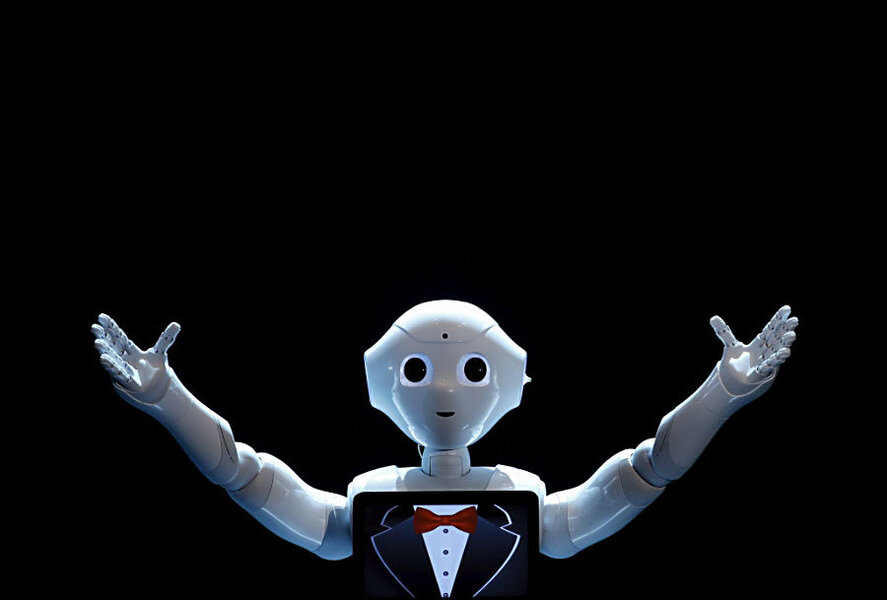At Pizza Hut, a robot may be taking orders
Pizza Hut is about to hire a robot to take your order. Yes, that's right, Pizza Hut Asia and MasterCard are working together to bring Pepper, a cutesy robot developed by SoftBank, to restaurants by the end of the year.
"Pepper can replace a digital kiosk experience, so instead of putting a bunch of tablets or display units in your restaurant, you would have the ability to put a robot in its place and have that cognitive experience," said MasterCard vice president Tobias Puehse.
"Approach the restaurant, order some takeaway, and Pepper would take you through that ordering experience." According to MasterCard, Pizza Hut would be Pepper's first commerce application.
Pepper begins by greeting the customer with hello, before both customer and Pepper pair the customer's MasterCard and MasterPass wallet app with the tablet attached to Pepper's chest that scans a QR code. Pepper can then take the customer's order, suggest daily specials, make personal recommendations, and list the food's calorie count and other nutritional information. During the interaction, Pepper also makes hand gestures and speaks with intonation, which makes its voice sound friendlier.
For a repeat customer, Pepper will be able to customize the interaction to reflect the customer's past purchases. Apparently, the robot can also accommodate the customer's mood. "Pepper has the ability to do emotional sensing," said Puehse. "It gets a sense of whether the consumer is happy or sad. That can help to make it engaging. Pepper would potentially adjust the ordering process for a customer who is happy or existed. Pepper could potentially make some jokes, etc. It actually responds to how the consumer is feeling. It's almost like digital empathy."
Last week at the Google I/O conference, SoftBank announced that Pepper would be getting an Android software development kit and that they would open a Pepper outpost in San Francisco this year. They also announced that when developer versions of Pepper go on sale in July, they would cost around $1,800. IBM may also give Pepper an intelligence boost with Watson, IBM's "supercomputer."
MasterCard chose to place Pepper in the Asia-Pacific market based on the robot's availability and because it had already been used for customer service in the region. Restaurant customers would therefore already have some degree of familiarity working with a robot. If all goes well with Pizza Hut, Pepper may get to work in other restaurants, as well.
Puehse says Pepper will not replace human employees, but some argue that the higher the minimum wage, the faster robotic workers could start to appear behind fast-food counters.
"This is the way things are going to go in the future: toward ever more automation," writes Tim Worstall of Forbes. "And our economic point here is that the higher the minimum wage the faster this sort of technology is going to spread: and thus, of course, the faster a higher minimum wage will destroy jobs."
Whether the correlation between minimum wage and technology plays a role, however, there's still some time before robots like Pepper replace minimum-wage workers across the spectrum.
"This is complementing the experience. It's not meant to replace human interaction," said Puehse. "Pepper makes transactional components of the experience more fun and engaging. You have the ability to make a more informed ordering experience than previously with a cashier, because it knows what the customer's personal preferences are."






